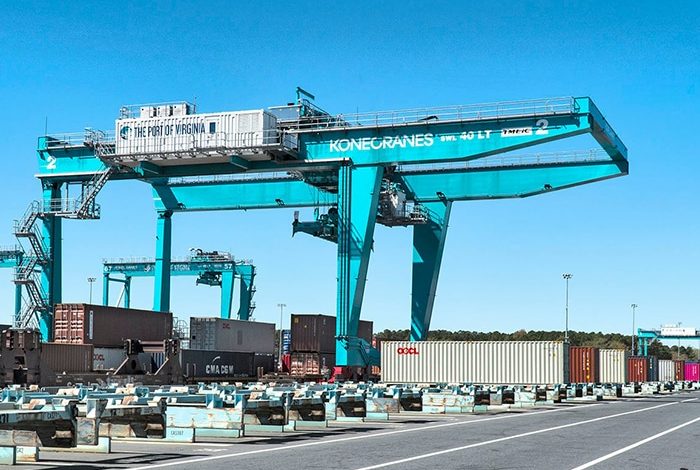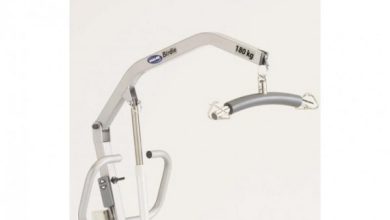How Gantry Cranes Enhance Efficiency and Safety in the Manufacturing Industry

In today’s fast-paced manufacturing environment, efficiency, precision, and safety are paramount. Whether assembling complex machinery, processing raw materials, or handling large components, manufacturers need reliable and versatile lifting solutions to keep production lines moving smoothly. One such solution that has proven invaluable in many manufacturing settings is the gantry crane.
A gantry crane, typically consisting of a bridge supported by legs or wheels, is an industrial crane that can be used for a variety of lifting and material handling tasks. The crane’s design allows it to move across the factory floor or facility, lifting heavy components with ease. The flexibility and durability of gantry cranes make them an essential piece of equipment in many manufacturing industries, including automotive, aerospace, steel production, and more.
In this blog, we will explore how gantry cranes contribute to enhancing both efficiency and safety in the manufacturing industry, from streamlining workflows to preventing costly accidents.
What Is a Gantry Crane?
A gantry crane is an overhead lifting device mounted on two or more legs that run along tracks or wheels. The crane consists of a horizontal bridge, which can span a factory floor or warehouse. This bridge houses the hoisting mechanism, which allows operators to lift and lower heavy loads.
Unlike traditional overhead cranes, which are typically fixed in place and mounted to the ceiling, gantry cranes are movable. The mobility and versatility of gantry crane make them highly adaptable to various manufacturing applications, offering distinct advantages in terms of space utilization, load handling, and operational flexibility.
Gantry cranes come in several variations, including:
-
Single Girder Gantry Cranes: These cranes feature a single beam and are ideal for lifting light to medium loads.
-
Double Girder Gantry Cranes: These cranes use two parallel beams, making them suitable for heavy-duty lifting tasks.
-
Portable Gantry Cranes: Smaller, more compact cranes that are mobile and can be used in smaller manufacturing environments or for specific tasks.
-
Full Gantry Cranes: Large cranes that span the entire length of a factory or production line, often used in large-scale manufacturing or heavy-duty industries.
Key Advantages of Gantry Cranes in Manufacturing
Gantry cranes provide numerous benefits to manufacturers, especially when it comes to improving operational efficiency, optimizing workflows, and enhancing safety. Here are some of the most significant advantages that gantry cranes bring to the manufacturing industry.
1. Enhanced Efficiency in Material Handling
One of the primary reasons gantry cranes are so widely used in manufacturing is their ability to significantly improve the efficiency of material handling. In many manufacturing plants, raw materials, workpieces, and finished products need to be moved between different stations along the production line. Gantry cranes offer a reliable solution for this task by automating the lifting and movement of heavy components.
Without gantry cranes, manual labor or forklifts would be used to move large components, which can be time-consuming and inefficient. Gantry cranes streamline the process by swiftly transporting items between stages of production. This is particularly useful in assembly lines where materials must be lifted, repositioned, or transported quickly to avoid delays and maintain productivity.
2. Increased Load Handling Capacity
Manufacturing processes often involve heavy components that are difficult to move manually or with smaller equipment. Whether it’s an automotive part, a steel beam, or a large industrial machine, the ability to lift and handle large loads is crucial to ensuring the production line keeps moving.
Gantry cranes, especially double girder models, are designed to lift and move very heavy loads with ease. These cranes are often equipped with powerful hoisting systems that can handle weights far beyond the capacity of manual labor or forklifts. With a gantry crane in place, manufacturers can lift and position large or bulky components without worrying about the limitations of traditional lifting equipment.
This increased lifting capacity ensures that production processes are not hindered by the physical limitations of other types of equipment, making it possible to handle a wide range of materials and components, no matter how heavy or large.
3. Improved Precision and Control
While handling heavy materials is essential, it is equally important to do so with precision, especially in industries like aerospace or automotive manufacturing, where components must be placed with high accuracy. Gantry cranes provide operators with precise control over the lifting and positioning of materials, making them ideal for applications that require exact placement.
Modern gantry cranes often come with advanced control systems that allow for fine-tuned movements, ensuring that loads are positioned accurately and securely. This is particularly beneficial when moving delicate or intricate components that must be handled with care.
The accuracy provided by gantry cranes can reduce the risk of errors and misplacement during manufacturing, which could otherwise lead to delays, rework, or even damage to expensive components.
4. Space Optimization
In many manufacturing plants, space is at a premium. Gantry cranes, particularly portable and adjustable models, help optimize floor space by offering an efficient way to transport heavy loads without requiring the expansive overhead structures of traditional cranes. Since the crane’s legs are mobile, they can easily navigate around the factory floor, positioning themselves where the lifting is needed.
This mobility allows manufacturers to use their space more effectively, especially in smaller or more congested environments. In addition, gantry cranes with adjustable spans and heights can be configured to work in tight spaces or reach hard-to-access areas of the factory, further optimizing the layout of production areas.
The flexibility to move across the workspace reduces the need for additional lifting devices, such as forklifts or manual laborers, which can take up valuable floor space and slow down the production process.
5. Enhanced Safety in the Workplace
Safety is always a top priority in manufacturing settings. Moving heavy materials, especially in busy or crowded areas, carries inherent risks of injury. Gantry cranes play a crucial role in reducing the potential for accidents and improving workplace safety.
Reduced Manual Lifting: One of the primary safety advantages of gantry cranes is the reduction in manual labor required for heavy lifting. Workers no longer need to strain their bodies or risk injury while lifting and moving heavy components. The automated lifting process ensures that materials are moved efficiently without putting workers at risk.
Stability and Control: Gantry cranes offer better stability and control over loads than manual handling or other lifting equipment. The precision control systems of modern cranes reduce the likelihood of drops, spills, or accidental shifting of materials during transport, which can be hazardous to workers in the vicinity.
Preventing Equipment Damage: With the precise control provided by gantry cranes, manufacturers can also prevent damage to expensive equipment or materials. Misplacement or improper handling of materials can lead to costly repairs or replacements, but gantry cranes reduce the likelihood of such accidents by ensuring that materials are properly positioned and moved.
Ergonomics and Worker Fatigue: By automating the lifting and movement of heavy materials, gantry cranes reduce worker fatigue and improve overall ergonomics. Workers no longer have to perform physically strenuous tasks that can lead to repetitive stress injuries or muscle strain. This not only protects workers’ health but also ensures that they can work more efficiently for longer periods without becoming exhausted.
6. Long-Term Cost Savings
While the initial cost of investing in a gantry crane may seem substantial, the long-term cost savings it provides can far outweigh the expense. Gantry cranes help manufacturers save money in several ways:
-
Reduced Labor Costs: With gantry cranes doing the heavy lifting, manufacturers can reduce their reliance on manual labor, which can be both time-consuming and costly. Fewer workers are required to perform lifting tasks, which leads to savings on labor costs.
-
Minimized Equipment Maintenance: Gantry cranes are highly durable and require relatively low maintenance compared to other types of heavy lifting equipment, such as forklifts or hoists. This minimizes downtime and reduces the need for frequent repairs or replacements.
-
Improved Productivity: Faster and more efficient material handling translates into higher productivity, enabling manufacturers to complete more tasks in less time. As a result, businesses can meet deadlines more consistently, complete larger orders, and reduce delays that could otherwise incur additional costs.
Conclusion: Gantry Cranes—An Essential Investment for Manufacturers
In the manufacturing industry, the need for reliable, efficient, and safe lifting equipment is crucial to maintaining a smooth and productive operation. Gantry cranes provide a solution that meets these demands by offering versatility, mobility, and precision in handling heavy loads. Whether you’re improving efficiency on the production line, enhancing workplace safety, or optimizing factory space, gantry cranes can make a significant impact on your manufacturing operations.
By automating the lifting process, reducing manual labor, and offering the ability to handle large and heavy components with ease, gantry cranes are essential tools for modern manufacturing. Their ability to increase efficiency, reduce risks, and lower long-term operational costs makes them an invaluable asset to any manufacturer aiming to stay competitive in today’s demanding industrial landscape.




